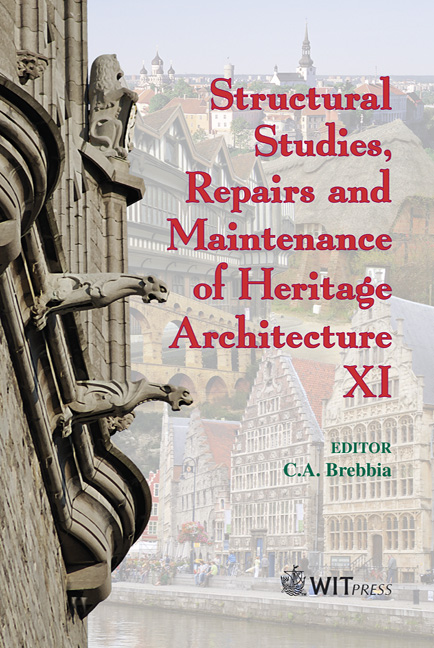Structural Analysis Of Two Metal De Dion Roof Trusses In Brussels Model Schools
Price
Free (open access)
Transaction
Volume
109
Pages
10
Page Range
121 - 130
Published
2009
Size
2,165 kb
Paper DOI
10.2495/STR090111
Copyright
WIT Press
Author(s)
M. de Bouw, I. Wouters & L. Lauriks
Abstract
From 1830 onwards state education was one of the priorities of the new Belgian monarchy. In 1875 the Ligue de l’Enseingement and architect E. Hendrickx put forward the École Modèle as a new school building typology where the préau – a spacious central covered courtyard – organized the entire school happening. This prototype served as a guideline for over 55 schools built by famous architects in every community of Brussels between 1875 and 1920. To span the préau, numerous metal roof trusses, varying from simple industrial Polonceau trusses to richly decorated de Dion trusses, span the 9 to 15 m wide central hall. Invented in 1837, the Polonceau truss had already established a solid reputation, and calculation methods were known and generally accepted at the time of the model schools. However, the structural functioning of the de Dion truss was completely new at that time. A study of the records and literature study did not reveal any kind of calculation notes for this truss typology. As a consequence, the extremely slender examples of this kind of truss raise questions on their real structural functioning, load-bearing capacities and capability to comply with modern standards without harming the subtle original structure. By means of historic documents, on-site surveys and finite elements calculations, this article goes deeper into the load-bearing capacity and stability of two de Dion roof trusses. Contemporary structural problems are stated, and the current conditions and safety level of these two trusses are discussed. Keywords: metal roof truss, de Dion, École Modèle, model school, Brussels, iron, steel, structural assessment, typologies, finite elements calculation.
Keywords
metal roof truss, de Dion, École Modèle, model school, Brussels, iron, steel, structural assessment, typologies, finite elements calculation




